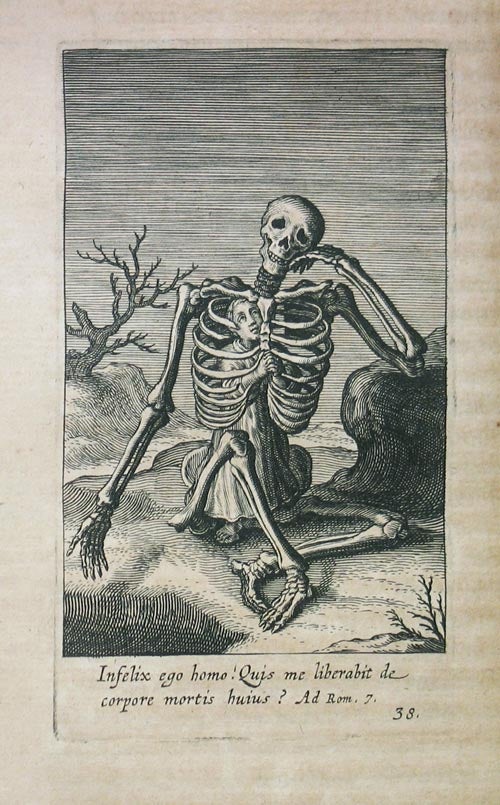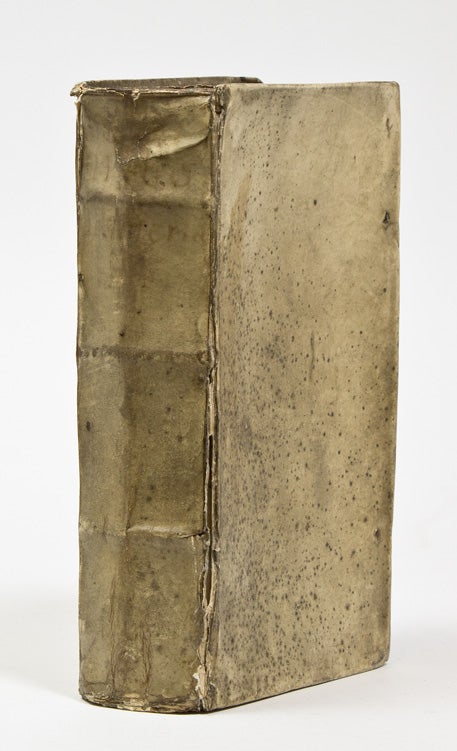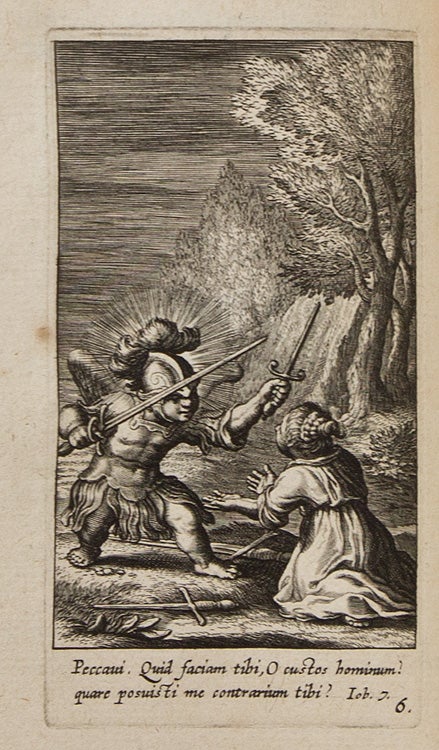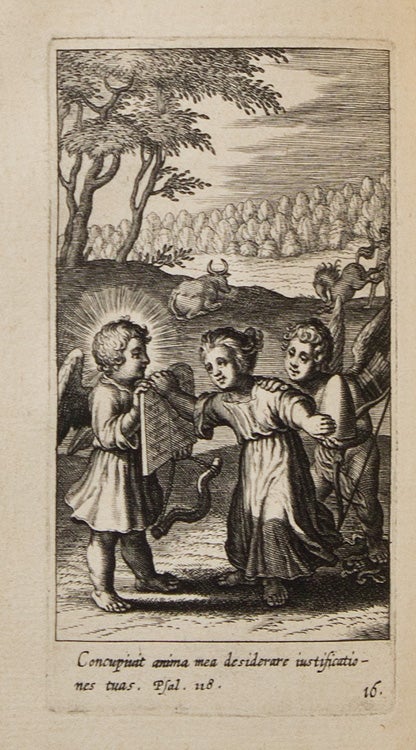Pia desideria emblematis, elegiis & affectibus SS. Patrvm illustrata.
Antwerp: Vulguait Boëtius a Bolswert, Typis Henrici Aertssenii, 1624.
Price: $3,000.00
About the item
First edition. Engraved allegorical title page, engraved coat of arms of Pope Urban VIiI, initial introductory enblem, and 45 leaves of engraved emblematic plates by Boëce van Bolswert; [32], 412, [3]. 1 vols. 8vo. Contemporary vellum (slightly soiled). Preliminary leaves misbound. Landwehr, Emblem & Fable Books 345.
Item #244193
First edition of the most popular spiritual love emblem book, which made the genre popular throughout Europe in the 17th century and beyond. By the end of the 18th century the Pia Desideria had been reprinted nearly 40 times in Latin, French, German, Spanish, Dutch, Polish, English, Danish, and Italian. This emblem book mixes tender messages of care with dire warnings to sinners, and while it is written in Latin, demanding a well-educated reader, it proved to be wildly popular. One of the keys of the popularity of this work are the emblematic designs of Boetius Adamsz. van Bolswert (ca. 1580-1633), each of which is accompanied by an explanatory caption. Born in Bolsward, Friesland, Boetius was a pupil of Abraham Bloemaert at Utrecht and went to Antwerp around 1618, joining the painter's guild in 1620. Boetius also worked in Brussels, where he met and was inspired by Pieter Paul Rubens. Herman Hugo (1588-1629), a Brussels Jesuit, was teacher at the Jesuit College in Antwerp and confessor of the Duke of Aerschot, with whom he went to Spain, where he was appointed army chaplain to Spinola. This book was used as a rhetorical example for students of Rhetoric at the Jesuit College at Brussels.






